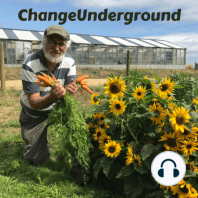6 min listen

108. A Return to First Principles - Three Steps to Regenerative Organic Production| #worldorganicnews 2018 03 19
108. A Return to First Principles - Three Steps to Regenerative Organic Production| #worldorganicnews 2018 03 19
ratings:
Length:
9 minutes
Released:
Mar 18, 2018
Format:
Podcast episode
Description
LINKS CONTACT: podcast@worldorganicnews.com Podcast Like a Pro: mrjonmoore.com FREE .PDF One Square Metre Garden: square@worldorganicnews.com Blog: www.worldorganicnews.com Facebook Page: World Organic News Facebook page. This is the World Organic News for the week ending the 19th of March 2018. Jon Moore reporting! As I discussed last month with the new vision statement for the podcast and blog, “Decarbonise the air, recarbonise the soil.”, in mind I’m calling on my listeners to put forward ideas for an interview episode once a month. If you know anyone who is doing either part of the vision, I’d love to hear from them or, indeed, from you if you are on the front line doing the work. This week I’m going back to first principles. What are these first principles? I’m glad you asked. There are, to my mind three basic truths to earth friendly gardening/farming. No digging/ploughing. No Bare Soil. No chemicals. I am aware these appear to fly in the face of 10,000 years of agricultural/horticultural practice. So let’s look at what those 10,000 years have created, shall we? From Iowa State University Extension and outreach Quote: tillage has all along been contributing negatively to soil quality. Since tillage fractures the soil, it disrupts soil structure, accelerating surface runoff and soil erosion. Tillage also reduces crop residue, which help cushion the force of pounding raindrops. Without crop residue, soil particles become more easily dislodged, being moved or 'splashed' away. This process is only the beginning of the problem. Splashed particles clog soil pores, effectively sealing off the soil's surface, resulting in poor water infiltration. The amount of soil lost from Iowa farmland each year is directly related to soil structure, levels of crop residue remaining on the soil's surface, and the intensity of tillage practices. End Quote Basically, ploughing to turn under crop residue, a practice designed to increase soil organic matter destroys soil structure, seals the soil from the atmosphere and leads to soil erosion. Remember: no soil, no food. While soil erosion is a cumulative effect, eventually only subsoil or bedrock is left, if the system continues to its logical conclusion. Over the past 10,000 years, from the beginning, new land was available for cultivation or top soils were so deep the losses were not catastrophic. We have reached a point where urban populations are now covering those deeper soils or they have gone. Land better suited to grazing is being put to the plough as animals are confined as factory widgets in feedlots rather than as ecosystem components where their grazing improves the grass cover, the soil health and the soil carbon. Think about the removal of the bison from the North American plains and the eventual dustbowl of the 1930s. This appears to have been a common line of cause and effect across human history. So to first principle number 1. No digging. This is most easily understood in a gardening context. The best way to do this, I’ve found, is in raised beds. Raised beds are created by piling organic matter, compost, animal bedding, decomposed leaf mould, that sort of thing onto an organic mat of some sort. I find cardboard is ideal, newspapers work well too. Podcast footnote: For our younger listeners, just google “Newspapers” to discover how we used to consume news in the olden days. End Podcast footnote. To plant into this material simple use you fingers to push larger seeds into the organic material. To plant seedlings a cut is made with a knife and the now topsoil is opened, the seedling inserted and the cut closed by pressure. It is actually much is to do than to describe. Larger implements have been developed for doing this on an agricultural scale. The basically consist of a knife blade, followed by a seeder followed by wheels reclosing the cut. The timing in agricultural settings is important. If planting into pasture, this needs to be ti
Released:
Mar 18, 2018
Format:
Podcast episode
Titles in the series (100)
06 #worldorganicnews 2016 03 07: This week we look at urban agriculture, convertin… by ChangeUnderground